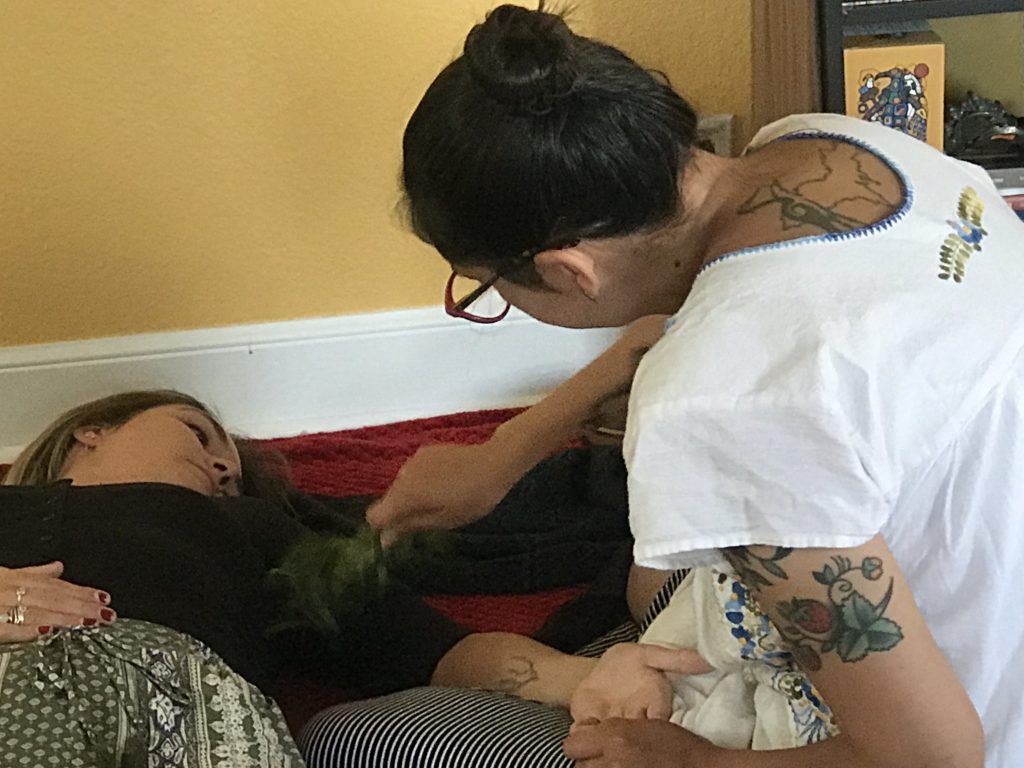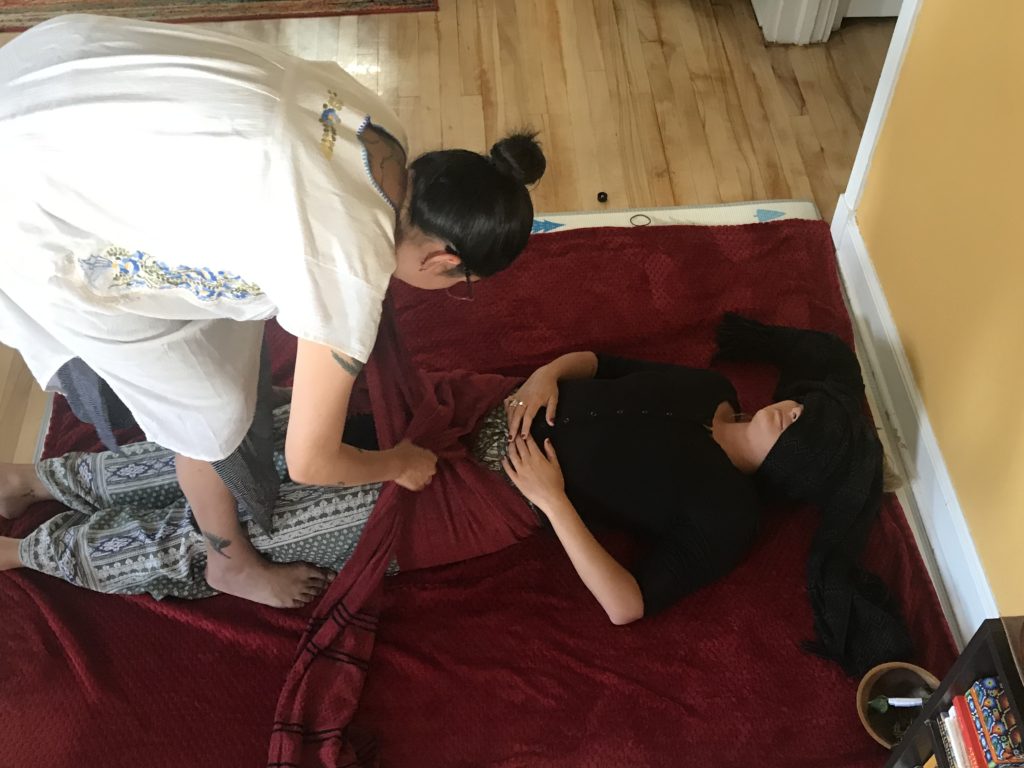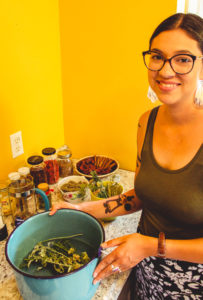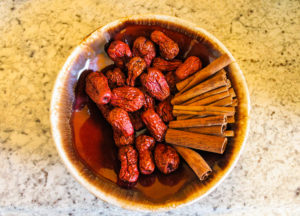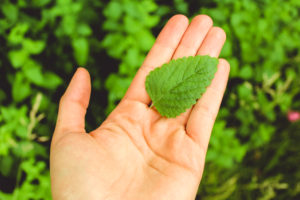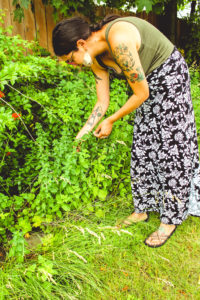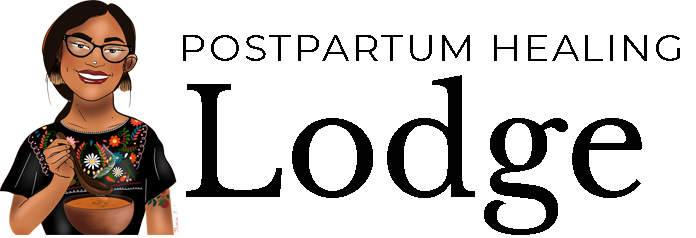Meet Raeanne
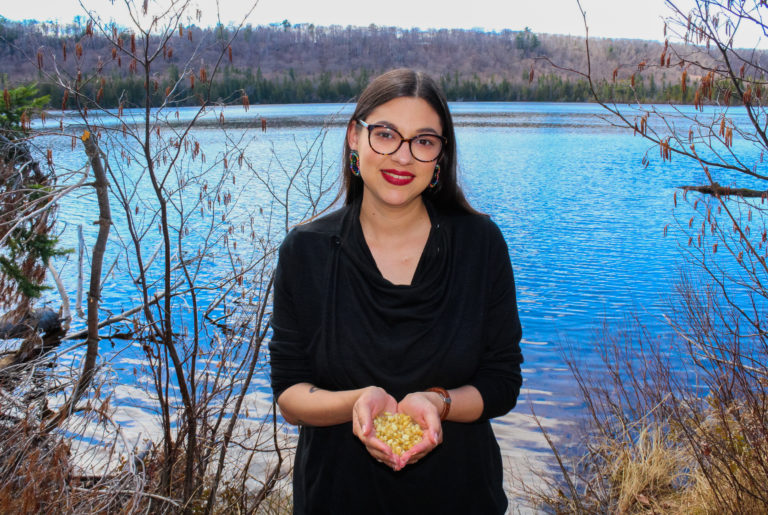
I’ve never felt better than I did after the birth of my second baby.
Yes, you read that correctly. After the peaceful, planned homebirth of my second baby, I spent 6 weeks bonding with my baby in my home, my safe haven – my healing lodge. I was surrounded by love and abundance as I sank into my new identity as a mother of two. I was the embodiment of duality: at once incredibly tender and incredibly strong. My milk flowed with ease, as did my tears. My senses were so heightened that I could feel a cold breeze on the other side of a closed window. My world had expanded exponentially: I could feel the grief of every Indigenous mother in my ancestral lineage who had ever suffered through historical trauma. And yet, my world shrank ever-inward as my attention became solely focused on my new baby. I was warm, safe, and healthy.
It took me nearly a decade to understand that birth and new motherhood does not equal suffering.
At the hospital birth of my first baby, I experienced significant disrespect at the hands of my birthing team. I was a good patient and did everything I thought I was supposed to; and I ended up with PTSD. My initiation into motherhood was marred by a birth injury, recurring bouts of mastitis, and lasting health problems that followed me for years afterward.
As birthing people, we tend to accept suffering as the norm.
Have you ever experienced weeks and weeks of postpartum blood loss, extreme cramping, and pain that doesn’t seem to go away?
Or even worse:
Have you ever felt like you were floating above your life, watching down on your newborn baby as those precious early days slipped furiously by?
I’ve been there. And it took me nearly a decade to overcome the feelings of regret.
Desperate to feel whole again, I spent the next 8 years connecting with Indigenous teachers in every corner of Anishinaabe Aki – pulling and piecing together every bit of traditional cultural knowledge that I could. I learned that my ancestors have rich and vast knowledge about how to birth and parent with ease and abundance, but that so many of us didn’t grow up with these teachings because of colonization. By connecting deeply with my Indigenous culture, I healed my womb and my birth story. I overcame my PTSD and healed my birth injury. My calling became clear: I HAVE to devote my life to helping others feel better after birth. I HAVE to devote my life to helping reclaim and revitalize traditional Indigenous knowledge about birth and postpartum.
The time to reconnect with our ancestral birthing practices is now.
That’s why I feel so honored to serve my community as a teacher and postpartum doula. We need a village of people who can spread the word: CULTURE HEALS. Culture works. And it’s time that we all have access to this life-affirming knowledge.
If you’re here, you’re probably like me. You believe that it’s time to decolonize our healing after birth. We don’t need to do this by ourself. Together, we can help our community by learning:
– How to prevent constipation after birth.
– How to naturally and quickly heal birth injuries.
– How to support abundant milk flow.
– How to reduce excess bleeding and pain.
Together, we can learn how to reconstruct our traditional postpartum healing lodge.
I’ve had the honor to walk with hundreds of families as they navigate the hills of life. And along the way, I’ve taught thousands of people about traditional Indigenous cultural practices.
If this is your calling, too, you’ve come to the right place. I invite you to explore the many different ways we can connect – whether through my signature online class for postpartum practitioners, or through my personalized postpartum doula services.
Welcome. I’m so glad you’re here.
